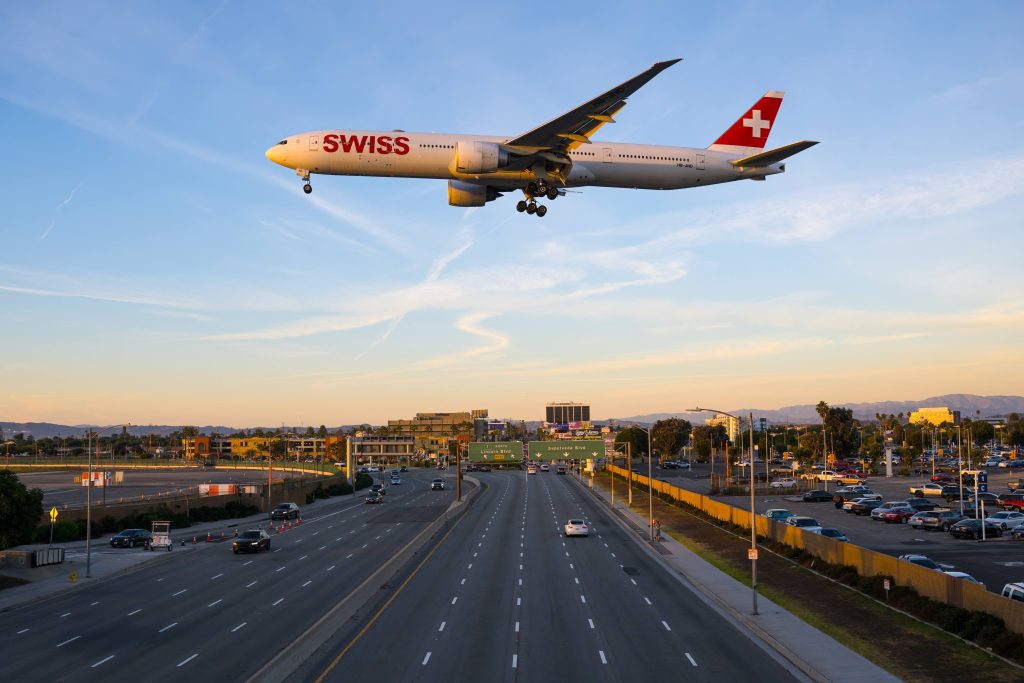Introduction In our exciting airport spotlight series, today’s feature is the renowned Los Angeles International Airport, commonly known as LAX. More than just a busy transit point, LAX is a symbol of Los Angeles’ rich history, cultural diversity, and commitment to innovation in the world of aviation.
A Rich History Los Angeles International Airport’s roots date back to 1928 when it was a humble field named Mines Field. Officially opening as an airport in 1930, it has since transformed into an international gateway and a significant landmark. The development of LAX mirrors the growth of Los Angeles itself, evolving from a small, regional airport into an international aviation leader. The iconic Theme Building, opened in 1961, is a testament to the city’s embrace of mid-century modern architecture and its vision for the future.
The Heart of Air Traffic
- Terminals: LAX’s unique U-shaped “Central Terminal Area” features nine passenger terminals, connected by a shuttle bus service.
- Passenger Experience: Emphasizing customer service, LAX offers a range of amenities, including numerous dining and shopping options, reflecting the diverse culture of Los Angeles.
Aviation Enthusiast’s Corner
- Runways: LAX boasts four runways, each meticulously designed to accommodate the heavy traffic of an international hub. The North Airfield has two runways, 24L/06R and 24R/06L, both equipped to handle large aircraft like the Airbus A380. On the South Airfield, runways 25L/07R and 25R/07L are similarly capable, with precision approach systems to manage the high volume of takeoffs and landings.
- Air Traffic Control: The airport’s modern control tower, standing at 277 feet tall, is an epicenter of aviation technology. Equipped with advanced radar systems and communication equipment, it plays a critical role in managing one of the busiest airspaces in the world.
- Aircraft Operations: LAX is known for its diverse range of aircraft operations, from private jets to the largest commercial airliners. It serves as a major hub for both domestic and international flights, handling complex operations with efficiency.
- Innovations in Aviation: LAX continually adopts cutting-edge technologies in aviation. This includes advanced navigation systems for pilots, innovative ground transportation management, and ongoing efforts to reduce environmental impact through sustainable practices.
Unique Features of LAX
- The Theme Building: This parabolic structure, a representation of the Space Age, is not only an architectural wonder but also a historical landmark.
- Arts and Culture: The airport’s art program and cultural exhibitions reflect the creative spirit of Los Angeles, showcasing works from a wide range of artists.
- Sustainability: LAX’s commitment to the environment is evident in its various green initiatives, making it a leader in sustainable airport operations.
LAX in Popular Culture As a symbol of Hollywood and the entertainment industry, LAX has appeared in countless movies and TV shows, often representing the glamour and excitement of Los Angeles.
Final Thoughts Los Angeles International Airport stands as a multifaceted entity, embodying the history, culture, and technological advancement of Los Angeles. LAX is more than a travel hub; it’s a destination in itself, reflecting the dynamism of the city it serves.
Check out our other quick takes on world airports.




